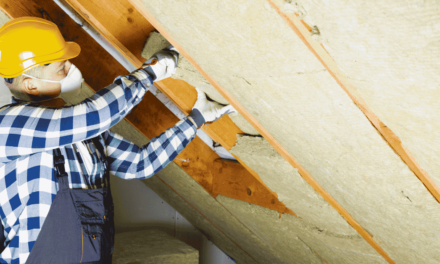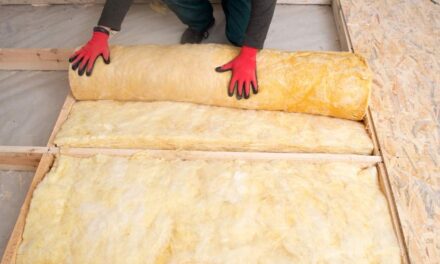Wall Insulation Explained -Wall insulation is one of the most effective ways to improve your home’s energy efficiency, reduce heating costs, and create a more comfortable living environment. In the UK, where homes are often exposed to cold and damp weather, proper insulation is essential. However, not all walls are the same, and the type of insulation you need depends on the construction of your home. This blog provides an overview of the three main types of wall insulation—cavity, solid, and party walls—and explains their benefits.
Cavity Wall Insulation
Cavity walls consist of two layers of masonry (usually brick or block) with a gap (cavity) between them. This design was introduced in the UK in the early 20th century to prevent moisture from penetrating the inner wall.
How Cavity Wall Insulation Works
Cavity wall insulation involves filling the gap between the two layers of masonry with insulating material. This is typically done by drilling small holes in the outer wall and injecting insulation into the cavity.
Benefits of Cavity Wall Insulation
- Improved Energy Efficiency: Reduces heat loss by up to 35%, lowering energy bills.
- Enhanced Comfort: Keeps your home warmer in winter and cooler in summer.
- Reduced Condensation: Helps prevent damp and mould by keeping the inner wall warmer.
- Quick and Non-Invasive: Installation usually takes just a few hours and requires minimal disruption.
Is Your Home Suitable?
Most homes built after the 1920s in the UK have cavity walls. However, homes in exposed or damp areas may not be suitable for cavity wall insulation. A professional assessment is recommended.
Solid Wall Insulation
Solid walls are made of a single layer of masonry, typically found in homes built before the 1920s. They have no cavity, making them more prone to heat loss.
How Solid Wall Insulation Works
Solid walls can be insulated either internally or externally:
- Internal Wall Insulation: Insulating material is applied to the inside of the wall, often using rigid insulation boards or stud walls filled with insulation.
- External Wall Insulation: Insulating material is applied to the outside of the wall and covered with render or cladding.
Benefits of Solid Wall Insulation
- Significant Energy Savings: Reduces heat loss by up to 45%, cutting energy bills.
- Improved Thermal Comfort: Eliminates cold spots and drafts.
- Enhanced Aesthetics (External Insulation): Can improve the appearance of your home and protect the masonry from weathering.
- Increased Property Value: Makes your home more energy-efficient and attractive to buyers.
Is Your Home Suitable?
Solid wall insulation is ideal for older homes in the UK. However, it can be more expensive and disruptive than cavity wall insulation, so it’s important to weigh the costs and benefits.
Party Wall Insulation
A party wall is a shared wall between two adjoining properties, such as in semi-detached houses, terraced houses, or flats.
How Party Wall Insulation Works
Insulating a party wall can be challenging because it requires cooperation between neighbours. Options include:
- Installing Insulation on Your Side: Adding insulation to your side of the wall using rigid boards or stud walls.
- Injecting Insulation into the Wall: If the party wall has a cavity, it can be filled with insulating material.
Benefits of Party Wall Insulation
- Reduced Noise: Improves soundproofing between properties.
- Enhanced Energy Efficiency: Reduces heat loss through the shared wall.
- Better Comfort: Keeps your home warmer and quieter.
Is Your Home Suitable?
Party wall insulation is particularly beneficial for terraced or semi-detached homes. However, you’ll need to discuss the project with your neighbour and may require a Party Wall Agreement.
Choosing the Right Wall Insulation for Your Home
Factors to Consider
- Age and Construction of Your Home: Cavity wall insulation is suitable for newer homes, while solid wall insulation is better for older properties.
- Budget: Cavity wall insulation is generally cheaper, while solid wall insulation can be more expensive but offers greater energy savings.
- Disruption: Internal solid wall insulation may require redecorating, while external insulation can alter the appearance of your home.
- Grants and Incentives: In the UK, government schemes like the Energy Company Obligation (ECO) may provide financial assistance for insulation projects.
Conclusion
Wall insulation is a smart investment for any UK homeowner looking to improve energy efficiency, reduce heating costs, and enhance comfort. Whether your home has cavity walls, solid walls, or party walls, there’s an insulation solution to suit your needs.
By understanding the different types of wall insulation and their benefits, you can make an informed decision and take steps towards a warmer, more sustainable home. Don’t let the cold weather get the best of you—insulate your walls today and enjoy the benefits for years to come.
By investing in wall insulation, you’ll not only save money but also contribute to a greener future. Stay warm, save energy, and make your home more comfortable with the right insulation solution!
https://econgn.com/loft-and-roof-insulation-your-guide-to-keeping-warm/





